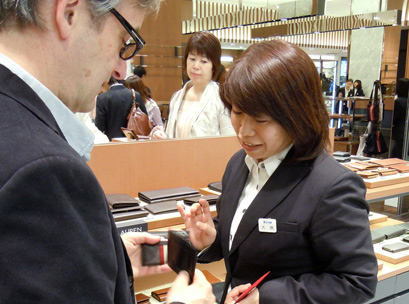Why is it that some of the best retailers (maybe I use that term too lightly), miss so many simple opportunities to make additional “easy sales”?
There is one technique that uses enhanced customer service to increase a customer’s average spend value and at the same time will have the customer leave the store with a smile of satisfaction and likely to return over and over again.
Whilst shopping in the lead up to Christmas I was reminded of one of these simple “plus sales and satisfied customer” techniques.
We were in one of the largest toy retailers in the Philippines selecting our toys on Santa’s behalf and several of our selections were battery-operated. The sales assistants (yes there were several of these as each worked for a different consignment supplier), cheerfully opened these items and installed batteries to confirm all were in working order. Once our selections were agreed we pushed the loaded trolley to the check-out to complete the payment process. The POS operator was efficient and carefully checked and scanned each item and asked if we would pay with cash or charge. She then totaled the POS and informed us with a big smile of the total amount due.
Sounds like a good news story on customer service but this retailer, (one of the leading toy stores in the Philippines), was about to lose an easy opportunity to entice us to willingly spend more money. We could have spent more and still would have left the store smiling and happy customers.
What about the batteries?!
Without batteries, the toys do not perform. Have you ever experienced the look on a child’s face on Christmas morning or upon receiving a birthday gift only to discover there are no batteries and it will not operate?
During the demonstration and testing process the sales assistants did not ask if we would like to buy batteries for each of the toys as they were only interested in selling the items belonging to their employer, the consignment supplier, (this would likely be driven by sales commission). At the check-out, the operator, despite checking each item individually, missed the opportunity to remind us that some items required batteries. This would have given us the prompt to buy batteries at the POS.
Now because we have previously experience a child crying because the new toy would not work without batteries I remembered at the last moment to ask at the check-out if we could buy batteries and with the answer being yes we set about determining which batteries were required and adding these to our total purchase.
Now in this example if I had not realised we needed to buy batteries we would have left the store having spent less and might have once again faced the sad look on a disappointed child’s face when the gifts were opened. To get batteries we would then have rushed to the nearest store of convenience and purchased the missing batteries. The Toy Store would have lost the opportunity to get extra sales and we would not have been inconvenienced having to run around to buying batteries. Purchasing in the Toy Store would have been more convenient for us and the local convenience store would not have been handed a little bit of extra market share simply because the Toy Store was lacking in customer service discipline.
So what went wrong in this “top” Toy Store that resulted in them losing the easy “add on sales”?
Service Associates were aligned to consignment suppliers and only interested in selling their own products because this is the basis of them earning sales commission.
Check-out operators are trained on processing money, checking on each other and packing the goods and were apparently unaware of and not trained in opportunities to create “add on sales”.
Batteries do not have dedicated service people, are considered to be impulse items and are sold from display stands. This store did not have batteries on display at the check-out, nor was there any marketing material to prompt customers to buy batteries.
Now let me demonstrate the value of lost easy “add on sales” and remember this is for one customer in one store on one day:
Total value of all toys purchased excluding batteries = P8305
Sub-total of retail sales from 3 battery operated toys = P3949
Cost of batteries – the easy additional sales = P564
Total value of all items including batteries = P8869
The add on sales for the batteries increased the pre batteries sales total by 6.8 per cent.
Batteries increased the purchase value of battery operated toys by a whopping 14.3 per cent.
Consider this – if this toy chain has 60 stores around the nation and if an average of 30 customers per day could have been sold batteries to the same value as in our experience and if this was achieved on each of the 24 days in December leading up to Christmas then the available “add on sales” would equal P24,364,800.
If you want to conduct an interesting test of this opportunity have your merchants calculate the retail value of batteries required to operate each b/o item and multiply the result by the number of items sold. That is the potential value to be gained if you train staff, (service staff and POS staff), to understand, embrace and practice the “add on sales” discipline.
This technique is just one of the proven processes that adds sales, increases profit, builds market share and increases customer satisfaction. If you would like to receive a list of my top 10 easy steps to increase sales and customer service success send me an email.
InsideRetail.Asia columnist Darrell Wisbey has 30 years retail experience, living and working in Australia and Asia. He is based in the Philippines and a member of Impact Retailing. Email Darrell.






